10 Products That Pay for Themselves
You want a good return on your stocks and other investments, but what about the household products you buy?
You might not think of your morning coffee or holiday lights as a source of high ROI – return on investment – but you should.
“I'm a big believer in investing in quality over quantity, so buying certain products that are longer-lasting or better made help you spend less in the long run,” said Tsh Oxenreider, author of the blog Simple Mom and the book Organized Simplicity . “Being frugal doesn't mean spending the absolute least amount of money. It means being good stewards with the money you have.”
So what items give you the biggest bang for your buck? Check out these 10 Products That Pay for Themselves.
If you ordered a $4 latte every day on your way to work, that works out to $20 a week, $80 a month – and nearly $1,000 a year! If you buy a good coffee maker, say $80 or more, and buy quality beans, you can have an equally good cup of coffee – for a fraction of the price.
Oxenreider, who says she and her husband are big coffee drinkers, estimates that a $10 bag of beans makes 30 cups of coffee, which works out to 30 cents a cup!
Product pays for itself in: 2 months.
Not to mention, you’re keeping all that plastic out of our ecosystem, says Consumer Reports home editor Bob Markovich.
Oxenreider says they have a pitcher model, which costs $20 up front. They spend $15 for three filters and replace the filters every 75 days. That’s $60 for the year.
If you bought a bottle of water for $1.50 every day of the week, that adds up to $10.50 a week and $42 a month.
Product pays for itself in: Less than 2 months.
That not only saves money on your water bill, but on your water-heating bill. The EPA estimates the average household could save 300 kilowatt hours of electricity annually, which is enough to power a television for one year.
You can buy a water-saving showerhead for as low as $15. Assuming an electricity rate of about 15 cents a kilowatt hour, that would save you about $45 a year.
Product pays for itself in: 4 months.
They cost about $10 for a package of two and last for about two years. (Though, one convert noted that the more dryer balls you use, the fluffier the clothes . She uses six for a family of five, her mom and dad use four.)
The average household does about 400 loads of laundry per year. Dryer sheets typically cost around $5 for 80, which means you’d spend about $25 on dryer sheets for the year. Plus, if it cuts your drying time by 40 percent, that would save about $80 in energy costs per year.
Product pays for itself in: 1 month.
Heidi Miller, author of The Frugal Girls blog, said she uses rechargeable batteries in everything from her digital camera to the Wii remotes. “Rechargeable batteries have proven to pay for themselves and much more in the long run,” Miller said. “It’s a simple way to save some cash.”
A battery charger costs about $18 and four AA rechargeable batteries cost about $6. A four-pack of regular AA’s costs about $4. Let’s say you have to replace those batteries once a month – this product would pay for itself in less than six months. Or, if it’s Christmas Day, with excited kids logging hours on their new toys, it may pay for itself in one day!
Product pays for itself in: About 6 months.
The real savings, of course, comes on your electric bill, which can soar during December, depending on how Clark Griswold you get. (Remember Chevy Chase’s “Christmas Vacation,” with the 20,000 outdoor lights and tree that wouldn’t even fit in the house?!)
A string of 100 lights can use as much as 90 kilowatt hours of electricity in a season. If you calculate it at 15 cents an hour, that’s $13.50 and that strand pays for itself in about two seasons. (That may not seem like a lot but multiply it by 10 strands and you’re over $100 in electric costs.)
Not to mention, Oxenreider points out, you won’t have to worry about hiding the extension cords!
Product pays for itself in: About two seasons.
If your monthly bill is $175 or more, that $40 product will pay for itself in just one month.
And, here’s the real bonus: You can set it to turn on half an hour before you wake up or before you come home from work – so no more freezing runs to the shower or hovering over the stove for warmth while the heat kicks on.
Product pays for itself in: 1 month.
A 100-pack of blank CDs costs about $20, but the real savings in the portable memory is that you can reuse them over and over again. CDs you can only write once. If you consider that you may use 5 CDs a month to back up key files or share photos from birthdays or family outings, a thumb drive would pay for itself in less than 2 years.
Not to mention, they save time – and the grief of lost files. “The cost of a portable hard drive is very low, compared to replacing invaluable lost data or copies of pictures!” Miller said.
Product pays for itself in: About 1 year.
“These blend ground-up wood and plastic, freeing you from termites and the usual refinishing – typically required every three years or so,” Markovich explained. “That can save you hundreds if you hire someone to do the job,” he said.
And, if you do it yourself, well, it can help you save your marriage, too! Power-washing and staining a deck is messy and puts love to the test. Say you want a 200 square-foot deck. The composite costs $2,000-$4,000 but the estimated life span is 50 years. Wood costs $1,000 to $1,400 and generally lasts less than 10 years. Plus, you have to spend a good $200 on supplies if you’re washing and staining it yourself and up to $400 if you’re paying a handyman to do it.
Product pays for itself in: 2-3 years.
The average commute is about 40 miles a day, which means you’d save $3 to $4 every day, or $800 to $1,000 every year just from your work commute.
When you factor in federal government tax rebates of up to $7,500, these cars would pay for themselves in about 5 to 6 years. If demand picks up, volume would help drive down the sticker price, which would make them even more cost-effective.
Product pays for itself in: 5 to 6 years.
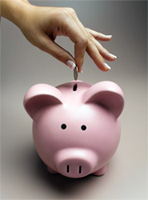 |
“I'm a big believer in investing in quality over quantity, so buying certain products that are longer-lasting or better made help you spend less in the long run,” said Tsh Oxenreider, author of the blog Simple Mom and the book Organized Simplicity . “Being frugal doesn't mean spending the absolute least amount of money. It means being good stewards with the money you have.”
So what items give you the biggest bang for your buck? Check out these 10 Products That Pay for Themselves.
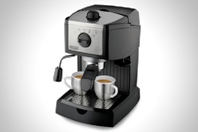 |
| Coffee makers could pay for themselves in about 2 months. |
Coffee Maker
People waste so much money on expensive coffee drinks that David Bach, a personal finance coach and author of the “Finish Rich” series, actually uses the term “The Latte Factor” to refer to all those little expenses like $4 lattes that add up and eat into your net worth.If you ordered a $4 latte every day on your way to work, that works out to $20 a week, $80 a month – and nearly $1,000 a year! If you buy a good coffee maker, say $80 or more, and buy quality beans, you can have an equally good cup of coffee – for a fraction of the price.
Oxenreider, who says she and her husband are big coffee drinkers, estimates that a $10 bag of beans makes 30 cups of coffee, which works out to 30 cents a cup!
Product pays for itself in: 2 months.
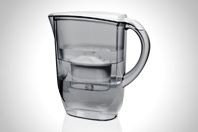 |
| Water filters could pay for themselves in less than 2 months. |
More from CNBC.com: |
Water Filter
Whether you go with a $20 pitcher water filter or a $150 carafe filtration system, Consumer Reports estimates that you can save hundreds of dollars per by filtering your own water instead of buying bottled water.Not to mention, you’re keeping all that plastic out of our ecosystem, says Consumer Reports home editor Bob Markovich.
Oxenreider says they have a pitcher model, which costs $20 up front. They spend $15 for three filters and replace the filters every 75 days. That’s $60 for the year.
If you bought a bottle of water for $1.50 every day of the week, that adds up to $10.50 a week and $42 a month.
Product pays for itself in: Less than 2 months.
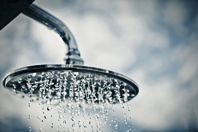 |
| High-efficiency shower heads could pay for themselves in about 4 months. |
High-Efficiency Shower Head
Showerheads that carry a “water saving” designation can lower water flow rates to less than 2 gallons per minute, less than half of what they were 20 years ago. That’s a savings of about 2,300 gallons per household per year, according to the Environmental Protection Agency.That not only saves money on your water bill, but on your water-heating bill. The EPA estimates the average household could save 300 kilowatt hours of electricity annually, which is enough to power a television for one year.
You can buy a water-saving showerhead for as low as $15. Assuming an electricity rate of about 15 cents a kilowatt hour, that would save you about $45 a year.
Product pays for itself in: 4 months.
 |
| Dryer balls could pay for themselves in about 1 month. |
Dryer Balls
Dryer balls save money in two ways: They eliminate the need for dryer sheets and they are estimated to reduce the drying time by up to 40 percent as the little spines lift and separate the clothes.They cost about $10 for a package of two and last for about two years. (Though, one convert noted that the more dryer balls you use, the fluffier the clothes . She uses six for a family of five, her mom and dad use four.)
The average household does about 400 loads of laundry per year. Dryer sheets typically cost around $5 for 80, which means you’d spend about $25 on dryer sheets for the year. Plus, if it cuts your drying time by 40 percent, that would save about $80 in energy costs per year.
Product pays for itself in: 1 month.
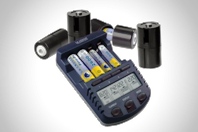 |
| Battery chargers could pay for themselves in about 6 months. |
Battery Charger
If you use your camera a lot, or you have kids with tons of toys that eat batteries, a charger is a huge money-saver, not to mention space saver when you go on vacation!Heidi Miller, author of The Frugal Girls blog, said she uses rechargeable batteries in everything from her digital camera to the Wii remotes. “Rechargeable batteries have proven to pay for themselves and much more in the long run,” Miller said. “It’s a simple way to save some cash.”
A battery charger costs about $18 and four AA rechargeable batteries cost about $6. A four-pack of regular AA’s costs about $4. Let’s say you have to replace those batteries once a month – this product would pay for itself in less than six months. Or, if it’s Christmas Day, with excited kids logging hours on their new toys, it may pay for itself in one day!
Product pays for itself in: About 6 months.
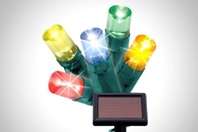 |
| Solar holiday lights could pay for themselves in about 2 seasons. |
Solar Holiday Lights
Solar holiday lights cost about $30 for a string of 100, compared with about $10 for a regular set of 100.The real savings, of course, comes on your electric bill, which can soar during December, depending on how Clark Griswold you get. (Remember Chevy Chase’s “Christmas Vacation,” with the 20,000 outdoor lights and tree that wouldn’t even fit in the house?!)
A string of 100 lights can use as much as 90 kilowatt hours of electricity in a season. If you calculate it at 15 cents an hour, that’s $13.50 and that strand pays for itself in about two seasons. (That may not seem like a lot but multiply it by 10 strands and you’re over $100 in electric costs.)
Not to mention, Oxenreider points out, you won’t have to worry about hiding the extension cords!
Product pays for itself in: About two seasons.
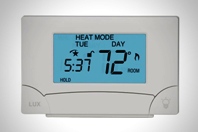 |
| Programmable thermostats pay for themselves in about 1 month. |
Programmable Thermostat
We waste a ton of energy while we’re sleeping and at work. With a programmable thermostat, which you can get for as little as $40, Consumer Reports estimates you can easily trim up to 20 percent off your heating and cooling bill by adjusting the temperature 5 to 10 degrees during those times.If your monthly bill is $175 or more, that $40 product will pay for itself in just one month.
And, here’s the real bonus: You can set it to turn on half an hour before you wake up or before you come home from work – so no more freezing runs to the shower or hovering over the stove for warmth while the heat kicks on.
Product pays for itself in: 1 month.
 |
| Portable flash drives could pay for themselves in about 1 year. |
Portable USB Flash Drive
You can get a decent portable flash drive for about $20 for transferring pictures and files from work to home or to another friend’s computer, or just to back-up your work.A 100-pack of blank CDs costs about $20, but the real savings in the portable memory is that you can reuse them over and over again. CDs you can only write once. If you consider that you may use 5 CDs a month to back up key files or share photos from birthdays or family outings, a thumb drive would pay for itself in less than 2 years.
Not to mention, they save time – and the grief of lost files. “The cost of a portable hard drive is very low, compared to replacing invaluable lost data or copies of pictures!” Miller said.
Product pays for itself in: About 1 year.
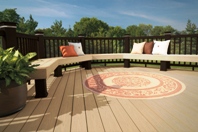 |
| Composite decking could pay for itself in about 2 -3 years. |
Composite Decking
It can cost $10 to $20 a square foot for composite decking compared with $5 to $7 a square foot for real wood.“These blend ground-up wood and plastic, freeing you from termites and the usual refinishing – typically required every three years or so,” Markovich explained. “That can save you hundreds if you hire someone to do the job,” he said.
And, if you do it yourself, well, it can help you save your marriage, too! Power-washing and staining a deck is messy and puts love to the test. Say you want a 200 square-foot deck. The composite costs $2,000-$4,000 but the estimated life span is 50 years. Wood costs $1,000 to $1,400 and generally lasts less than 10 years. Plus, you have to spend a good $200 on supplies if you’re washing and staining it yourself and up to $400 if you’re paying a handyman to do it.
Product pays for itself in: 2-3 years.
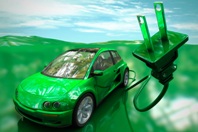 |
| Electric cars could pay for themselves in about 5 to 6 years |
Electric Car
The sticker price of electric vehicles is high but operating costs are much lower – an estimated 2.5 to 4 cents per mile, compared with an estimated 12 cents for a standard vehicle that gets 25 miles to the gallon.The average commute is about 40 miles a day, which means you’d save $3 to $4 every day, or $800 to $1,000 every year just from your work commute.
When you factor in federal government tax rebates of up to $7,500, these cars would pay for themselves in about 5 to 6 years. If demand picks up, volume would help drive down the sticker price, which would make them even more cost-effective.
Product pays for itself in: 5 to 6 years.


No comments:
Post a Comment